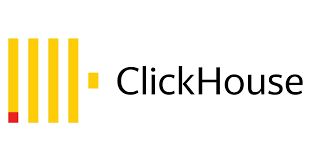Understanding Pay Per Click (PPC)

Are you looking to make money online? Have you heard about Pay Per Click (PPC) advertising and want to know how it works? If so, you’ve come to the right place. In this article, we’ll delve into the ins and outs of PPC, providing you with a comprehensive guide to help you get started on this exciting journey.
What is Pay Per Click (PPC)?

Pay Per Click (PPC) is an online advertising model where advertisers pay a fee each time one of their ads is clicked. Essentially, it’s a way to buy visits to your website, rather than earning visits organically. The most popular platform for PPC advertising is Google Ads, followed by Bing Ads and other social media platforms like Facebook and Instagram.
How Does PPC Work?

PPC campaigns are managed through an advertising platform, such as Google Ads. Here’s a step-by-step breakdown of how it works:
-
Create an account on the advertising platform of your choice.
-
Set up your campaign by choosing a goal (e.g., website traffic, leads, sales).
-
Choose your target audience, including location, age, gender, and interests.
-
Write compelling ad copy and design your ad.
-
Set your budget and bid on keywords relevant to your business.
-
Launch your campaign and monitor its performance.
Benefits of PPC
PPC advertising offers several benefits that make it an attractive option for businesses looking to make money online:
-
Targeted Advertising: You can reach a highly targeted audience, ensuring that your ads are seen by people who are most likely to be interested in your products or services.
-
Measurable Results: With PPC, you can track your campaign’s performance in real-time, allowing you to make data-driven decisions to optimize your ads.
-
Controlled Budget: You have complete control over your budget, and you only pay when someone clicks on your ad.
-
Immediate Results: Unlike organic search engine optimization (SEO), PPC can generate traffic to your website almost immediately.
Setting Up a PPC Campaign
Now that you understand the basics of PPC, let’s dive into the steps to set up a successful campaign:
-
Choose Your Platform: As mentioned earlier, Google Ads is the most popular platform, but Bing Ads and social media platforms like Facebook and Instagram also offer robust PPC options.
-
Define Your Goals: Determine what you want to achieve with your PPC campaign, whether it’s brand awareness, lead generation, or sales.
-
Research Keywords: Use keyword research tools to identify relevant keywords that your target audience is searching for.
-
Create Compelling Ad Copy: Write clear, concise, and persuasive ad copy that encourages users to click on your ad.
-
Set Your Budget and Bids: Decide how much you’re willing to spend on your campaign and set your bids accordingly.
-
Monitor and Optimize: Regularly review your campaign’s performance and make adjustments as needed to improve its effectiveness.
PPC Best Practices
Here are some best practices to help you maximize the success of your PPC campaign:
-
Use Ad Extensions: Ad extensions provide additional information about your business, such as phone numbers, location, and links to specific pages on your website.
-
A/B Test Your Ads: Test different versions of your ads to determine which ones perform best and optimize accordingly.
-
Optimize for Mobile: Ensure that your ads and landing pages are mobile-friendly, as a significant portion of users access the internet via mobile devices.
-
Leverage Retargeting: Retargeting allows you to reach users who have previously visited your website but



